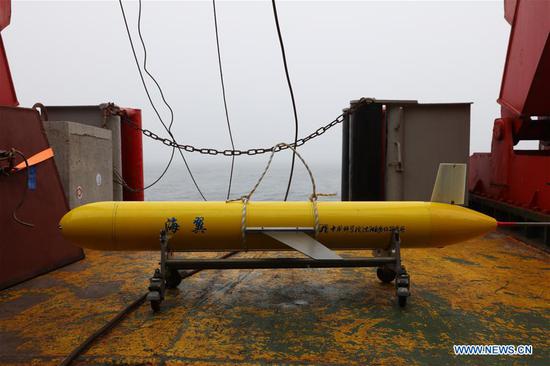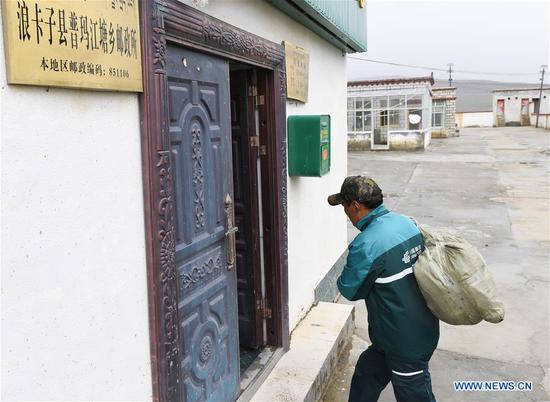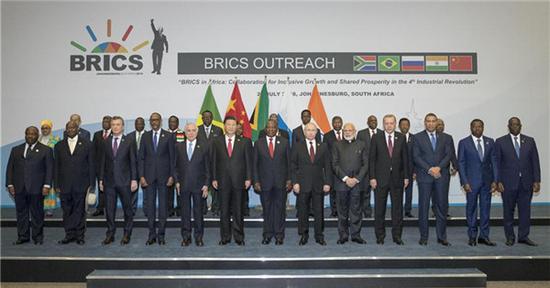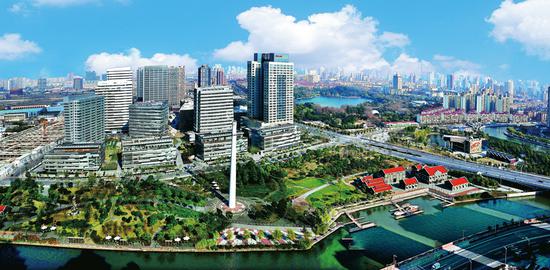
A Chinese couple from Jiangxi province say they are excited about attending World Cup matches as they pose with a mascot in Moscow on June 14, 2018. (Photo/Xinhua)
Dai Bin, director of the China Tourism Academy, said Chinese tourists are seeking more diverse experiences overseas.
The middle class, who are the backbone of the outbound tourism market in the Chinese mainland, are more willing to slow down the pace of their hectic lifestyles and enjoy in-depth travel experiences, encompassing quality accommodation, fine food, top-end shopping and classy cultural fare, he said.
"More people prefer independent trips, instead of traveling with groups, and those who spend a lot of money shopping now account for only a small portion of Chinese tourists," he said.
To be sure, shopping expenses of mainland tourists fell by about 10 percent last year, according to the June report of the academy.
Next-door Japan offers not just short flights but good services, rich theme park resources, and food that conforms to Chinese eating habits. Hence, it is the most popular tourism destination of Chinese travelers this summer.
Hotels and other types of high-end accommodation in Tokyo, Osaka, Kyoto and Sapporo found their orders soar over 80 percent year-on-year.
Tokyo tops the list of most popular overseas destinations this summer, with the number of bookings for hotelrooms in the city expanding by nearly 100 percent over the same period of last year, according to Ctrip.
Sapporo, which is cooler when it is hot summer in China, saw an increase of 89 percent in hotel room bookings. Besides, compared with spring this year, the average hotel room rate in Sapporo climbed 43 percent over the past season, whereas the hotel room rate in Kyoto added only 1 percent.
Meanwhile, customer bookings for rooms at children-friendly hotels have witnessed a significant growth as young families are travelling more. This summer, the tropical islands of Southeast Asian countries have become the most well-received destinations for those tourists traveling with their children, Ctrip found.
Bali island in Indonesia, Costa Rica in Latin America, Phuket island, Koh Samui, Krabi and Pattaya in Thailand, Langkawi and Kota Kinabalu in Malaysia ... these are all listed among the top 10 most popular destinations with children-friendly hotels. Among them, hotels in Pattaya and Kota Kinabalu saw a 50 percent rise in occupancy this summer.
"More airlines have launched direct flights between China and Southeast Asian countries, and the number of Chinese tourists who travel to the region is rising rapidly, given its proximity and relatively easier visa policies," Xie said.
Currently, 120 million Chinese hold valid passports. This means, 90 percent of the Chinese population has not traveled abroad yet, indicating a significant growth potential for outbound tourism.
Sun Jie, CEO of Ctrip, said earlier this year that by 2020, around 240 million Chinese citizens are expected to hold passports, and this will further spur the boom in the outbound tourism market.
The China Tourism Academy said in its report in June that 131 million Chinese mainland tourists traveled to Hong Kong, Macao, Taiwan and the rest of the world last year, up 7 percent year-on-year. The corresponding figure was 8.42 million in 1978 when the reform and opening-up began. So, the number grew an average 15.5 percent annually.
Recently, Bosnia and Herzegovina, and Belarus in Europe and Zimbabwe in Africa have introduced visa-free or visa-on-arrival policies for Chinese tourists. As of July, there are 72 countries and regions that have introduced either visa-free or visa-on-arrival policies for Chinese citizens.
This summer, the largest number of Chinese travelers who applied for tourist visas to visit foreign countries were from Shanghai, Beijing, Guangzhou and Shenzhen in Guangdong province, Nanjing in Jiangsu province and Chengdu in Sichuan province, respectively.
Compared to last summer, the number of visa seekers from those cities grew by 50 percent to 160 percent, according to Ctrip report.
Those born in the 1970s and 1980s accounted for the majority. Besides, travelers who were born after 2000 made up nearly 20 percent, and most of them traveled abroad for the first time with their parents, Ctrip said.
Japan, Thailand, Singapore, the United States, Malaysia, Australia, Canada and France, were among the countries that received the most visa applications from Chinese travelers this summer.
Japan saw its number of visa applications from China surge 142 percent over last summer, and the number jumped 66 percent for Australia, the report said.
According to global marketing consultancy Accenture, travel firms should customize products to suit individual tastes, so as to meet the demands of different tourists. For, these days, some seek adventure and thrills, and some a more luxurious experience, while others may be cost-conscious.


















































